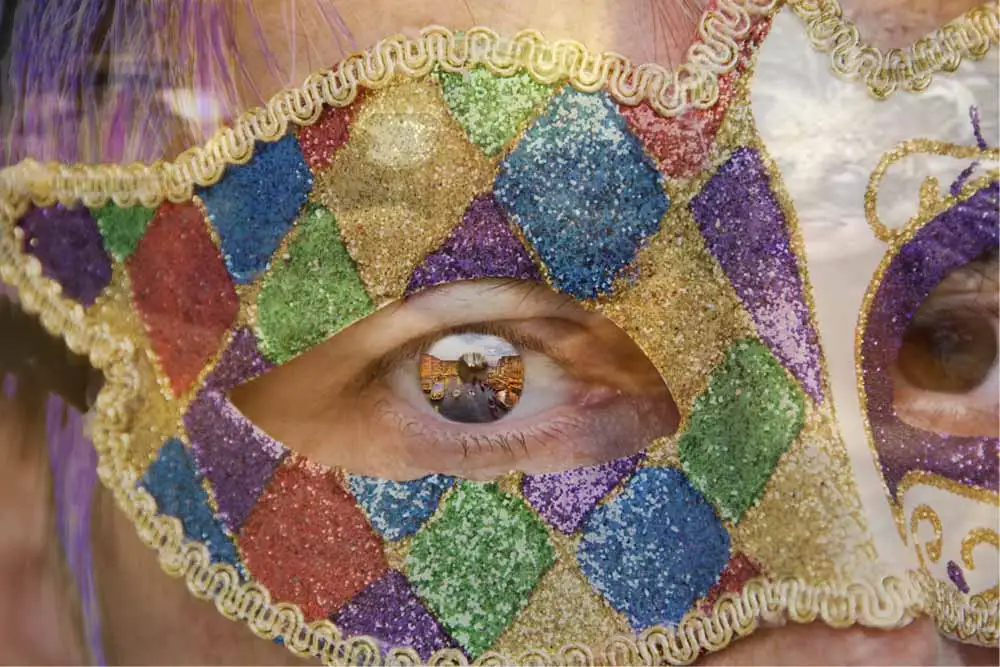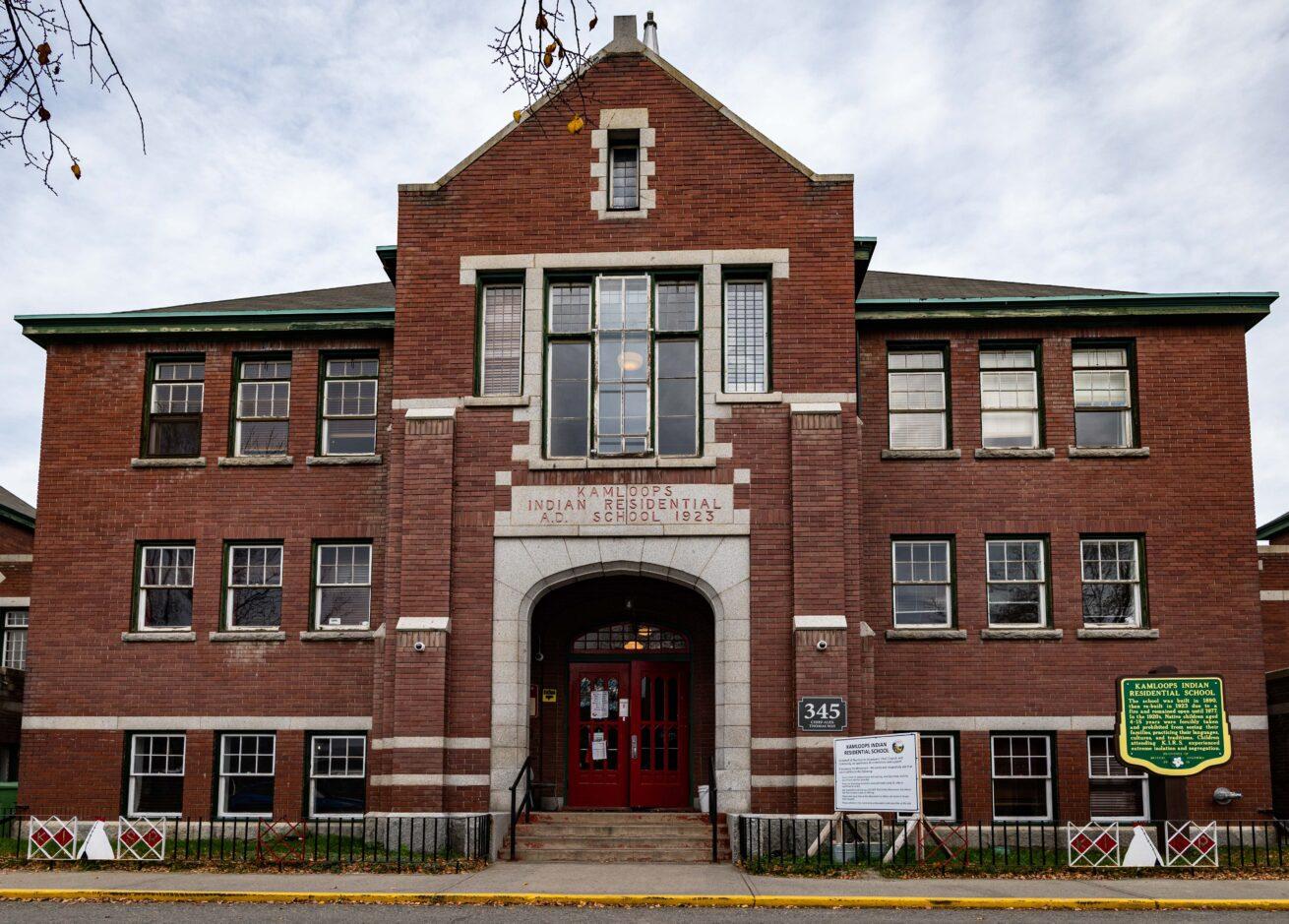KAMLOOPS INDIAN RESIDENTIAL SCHOOL, B.C., CANADA – OCT. 30, 2021
I could not visit the North Shuswap area in British Columbia without seeing the Kamloops Indian Residential School (KIRS). Last summer, Tk’emlúps te Secwépemc (the Salish Indian band) announced that ground-penetrating-radar was used to locate the human remains of over 200 children. The remains were detected in the orchard area of the campus, south of the main buildings.
The revelation rocked the country, and shook many out of their apathy around longstanding First Nations claims concerning the residential schools. Some feel that it was the tipping point that led to the new Truth and Reconciliation federal holiday that was declared last September. “Every Child Matters” and the orange shirt movement has gained global attention, as the horrors and abuses of these schools is finally getting the attention so many have longed for over the years.
The Residential School System
The Canadian Indian Residential School program was a network of boarding schools for indigenous children from 1894 – 1947. The children were forced to attend, and parents threatened with prison if they prevented them from going. The system was created to isolate indigenous children from their own culture and religion to attempt to assimilate them into the dominant, Euro-Canadian culture. Around 150,00 children were forced to attend these schools. The peak attendance at the Kamloops school was 500 in the 1950’s. It was the largest residential school in the country at that time.
The Canadian government’s Department of Indian Affairs funded the schools, but it was often the Catholic Church that ran them. According to Kamloops This Week the Oblates of Mary Immaculate took over running KIRS in 1893.
“The children were not allowed to speak their native language nor practice their own spirituality. Many children ran away and some disappeared and died,” notes the article.
Conditions at the Schools
Survivors had long told stories of beatings for speaking their native language, of stealing food to survive, and even being awakened in the middle of the night to dig graves for students who had died. Those testimonies and historical records reveal how, as a CBC article details, some children died from diseases like tuberculosis and measles.
“Others drowned in the Thompson River, which flowed nearby. Some, fleeing school, tried to hop trains and died. Others died of suicide,” the article reports. Within. the entire system, estimates of indigenous children’s deaths range from 3,200 to over 30,000.
However, the number of school-related deaths remains unknown at these schools due to incomplete records. Last May, Tk’emlúps te Secwépemc revealed that it had hired a specialist in ground-penetrating-radar to search the Kamloops Indian Residential School orchard area. A child’s rib bone and tooth had been found in that area. The band also said that its Language and Culture Department oversaw the project to ensure it was done in a culturally appropriate and respectful way.
Ground-penetrating-radar
That expert was Sarah Beaulieu, an anthropology professor and archaeology specialist at the University of the Fraser Valley. Using ground-penetrating-radar (GPR), she scanned just two out of the site’s 160 acres. The scan led her to believe that at least 200 unmarked graves lay below the surface.
“Only excavation can definitively tell the exact number of children buried near the school,” she said at the press conference where the findings were released. She has also noted that she was only helping substantiate what was already known within the native community.
“My findings confirmed what Elders had shared,” Beaulieu said at a July media event last summer reported on by the University of the Fraser Valley. “It’s an example of science playing an affirming role of what the Knowledge Keepers already recognized.”
GPR is a technology that has been around for decades. It looks like a lawnmower and is used in both archeology and infrastructure maintenance. “It sends radio waves into the ground, which are then bounced back to the machine from different depths, which helps users detect differences in densities, and thus any objects that may be under the ground.” notes the UFV article.
Apology from the Catholics
Meanwhile, the Missionary Oblates of Mary Immaculate religious order has reached out to Tk’emlups te Secwépemc Chief Rosanne Casimir. A Kamloops This Week article reported last May that the order offered investigation assistance and expressed its sympathies. They say that the school’s records are now at the Royal B.C. Museum in Victoria. In 1991, the religious order did offer an apology and later paid out various lawsuits and contributed $3 billion in compensation given to 28,000 claimants who were residential school survivors. Their apology reads in part:
“We apologize for the part we played in the cultural, ethnic, linguistic and religious imperialism that was part of the mentality with which the peoples of Europe first met the aboriginal peoples and which consistently has lurked behind the way the Native peoples of Canada have been treated by civil governments and by the churches…”
In a widely reported event last September, the Canadian Conference of Catholic Bishops released a statement expressing “profound remorse” and apologized “unequivocally” to Canada’s indigenous peoples for a century of abuses. They identified those abuses as physical, psychological, emotional, spiritual, cultural, and sexual.
In more recent news, the Pope has reportedly agreed to come to visit Canada amid all the cries for an apology from the greater Catholic Church. No date has been set for the papal pilgrimage.
Moving ahead at Kamloops Indian Residential School
One of the next steps will be deciding whether or not to exhume the remains. That decision alone could take years, according to an informative Global News piece.
“If a decision is made to exhume at the site, it would start with establishing a perimeter of the gravesite through ground-penetrating radar. Once surface soil is removed, it would be a slow, meticulous operation done by hand. Documenting every little detail is paramount.” Then the remains would be removed and identified through historic records, DNA and family information. The whole process could take decades. This Global News video with personal remembrances from Mr. Saa Hill Thut discusses more of the issues behind the search for accountability.
Visiting the school
Today, anyone can visit part of the Kamloops Indian Residential School, which is on Tk’emlúps te Secwépemc land. As you can see in my photos, there is an interpretive sign and stone monument with the names of children who attended the school. Various offerings are located around the building as well. The museum is closed because of COVID, and the heritage garden is currently closed to the public.
Like so many others, I find this is a deeply disturbing and heartbreaking story. How can it ever end? Resolution of any kind seems a long, long ways in the future. As Chief Casimir said on the first annual Truth and Reconciliation Day, “Steps toward reconciliation demand honesty and transparency.”
* * *
All photos are copyright Chris Allan and cannot be used without my written permission. Please contact me for usage rights. Thank you for reading my blog post “Kamloops Indian Residential School.” To learn more about me and my work, please see my About page.

